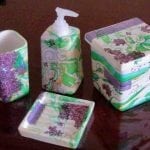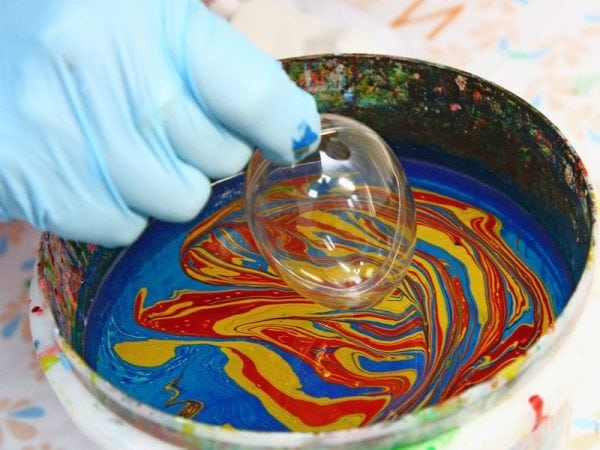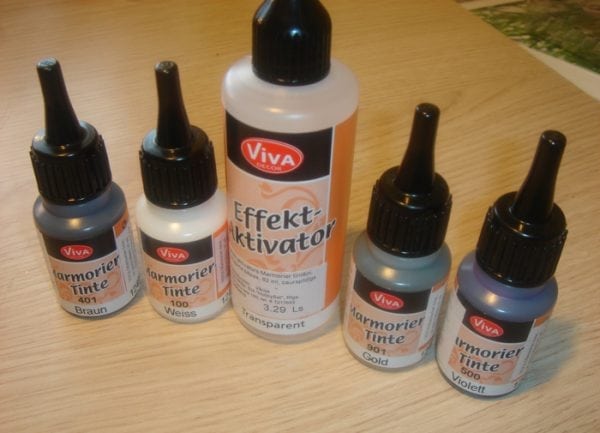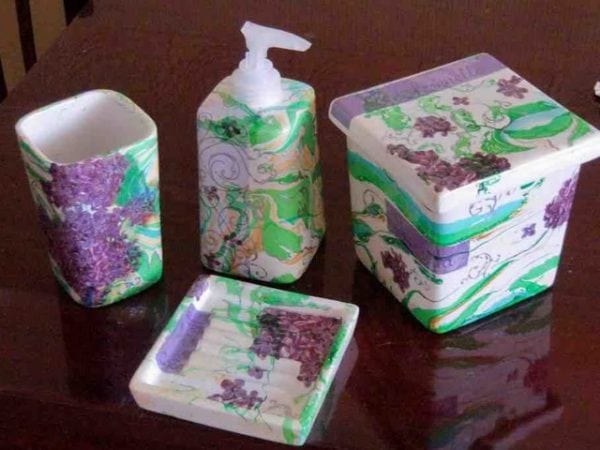Marbling (marbling) is the process of decorating a marble coating. They give a marble look to a variety of materials. Marble glass, ceramics, paper, cardboard, wood, fabrics and even gypsum.
general information
Marbling does not differ in technological complexity and allows you to get an externally attractive coating. Paints and varnishes (paintwork materials) form multi-color stains. Looking at such stains creates a feeling of similarity with marble streaks.
The technique of painting during marbling differs from the traditional one. Do not use devices such as a spray bottle, brush or roller. Staining is carried out by dipping an object into a container with paintwork.
Dipping does not mean complete immersion, since the paint composition does not fill the entire container, but only creates a surface film on the liquid. To give the coating the desired effect, several multi-colored dyes are used. Their combination allows you to get the final composition.
As paints for marmorizing, liquid glossy enamels are used. The compositions are made by adding alkides or acrylates to the water. Glossy enamels dry quickly, are resistant to humid environments.
to contents ↑Note! LKM for marbling should be lighter than water to be on the top layer of liquid.
Marbling technology
The technique of marbling is based on the use of special paints. Such formulations are easy to find on sale. The cost of such paints and varnishes is quite affordable. If there is no special paint at hand, surface decoration can be carried out with the usual paintwork composition.
Special dyeing
To carry out the work, you need such tools:
- specialized paintwork materials;
- a container for dipping into it painted products;
- needles (toothpicks, straws);
- subject for painting.
Before applying the paint, the item must be prepared. This will provide good adhesion (adhesion between coatings of dissimilar materials). Preparatory work consists in degreasing the surface and priming it.
Advice! It is recommended to think over the desired color palette in advance and prepare the necessary paintwork.
Painting Instructions:
- Pour warm water into a container. Water should be enough to dive the subject, but not too much. Otherwise, do not spill liquid.
- Shake paint containers.
- Add a drop of each type of paint to the water. Fragments of paints and varnishes spread over the water surface. As a result of spreading, a thin film appears.
- The next part of the work is creative and the most responsible. The final result of painting depends on this stage. The goal is to create a pattern on the material being processed. The pattern is formed using a needle, toothpick or any similar object (straws, knitting needles, etc.). This device is necessary to create the effect of a "whirlpool" of paint.
- Immerse the product to be painted in liquid. When immersed, the item is covered with paint. If the subject is light and thin (for example, a paper sheet), simply place it on a water surface.
- As soon as the item is completely immersed in the composition, push the paint to the walls. Next, get an already painted product.
Specialized coatings allow marbling with the most non-trivial effects. Perhaps even the application of drawings (flowers, ornaments, etc.).
After the item is removed from the container, it is dried. Drying is carried out only in an upright position - in the same in which the object was removed from the water.
to contents ↑Regular dyeing
It is not necessary to rely on specialized paints and varnishes. However, this approach is more difficult to implement. As an alternative, ordinary oil paint is suitable. The choice of oil formulations is due to their insolubility in water.
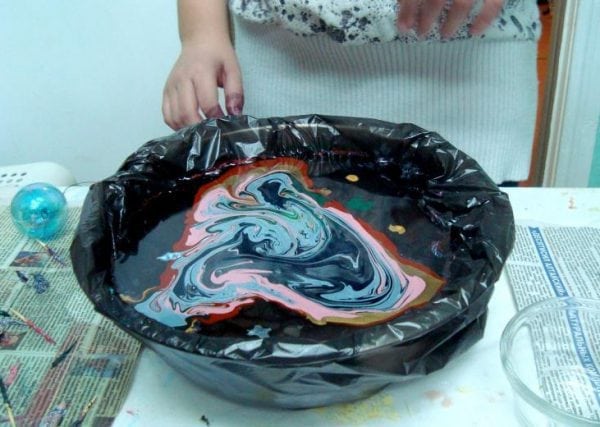
It is important not to overdo it with the solvent: too much of it will lead to fading of the coating. The coloring process is the same as with specialized paints.
to contents ↑Marbling paper
The following materials and accessories will be needed for marming paper:
- paints (gouache, acrylic or even food);
- water tank with paint and varnish material;
- thick paper;
- straws
- things that do not mind stain;
- newspaper or other liner on which the paper will dry.
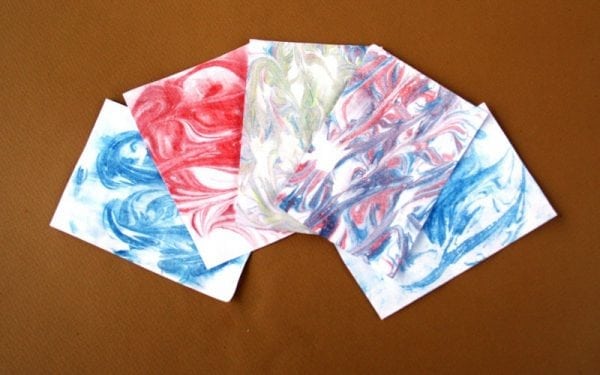
- We collect a small amount of water in a container. Water should only slightly cover the bottom. Add a little paint to the liquid. A combination of three colors will look optimal.
- Bred LMB using a straw.
- Add another drop of paint material.
- As soon as we get the planned pattern on the surface of the water, drop a sheet of paper into the liquid. Hold the paper in liquid for 1.5 - 2 minutes. Do not immerse the sheet completely: it should be on the surface of the water.
- We take a sheet from the surface of the painted water.
- We place the sheet on any surface (for example, a newspaper). Let the paper dry.
- When the sheet dries, put a few books on it. This will allow the paper to straighten completely after drying.
Advice! To wash off the paint easily, it is recommended to add a little vegetable oil to the water.
Marbling is not only a way to get a beautiful coating, but also an exciting process. Although the procedure cannot be called too complicated, it is not always possible to immediately achieve the desired result, since success requires “getting a hand in it”.

